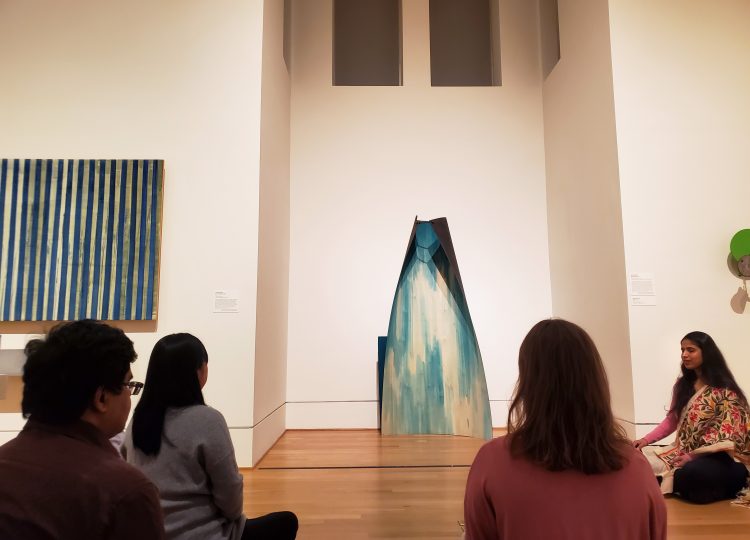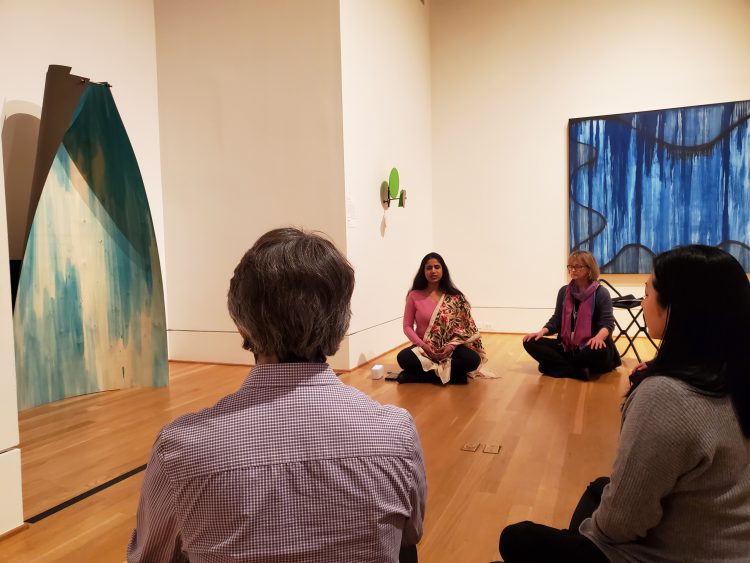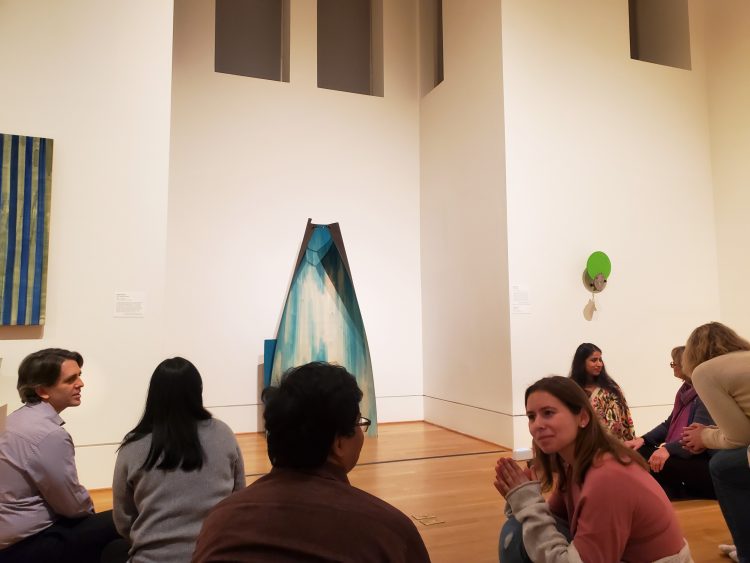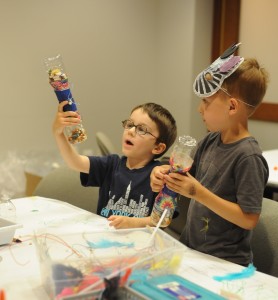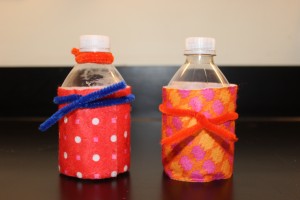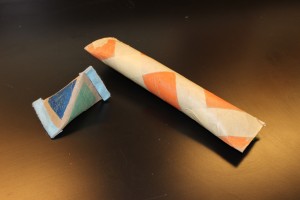Hilary Katz, Manager of Teacher initiatives, shares insights on the arts integration course offered by the University of Maryland and The Phillips Collection. “Connecting to the Core Curriculum” provides PreK-12 educators with the opportunity to blend the visual arts seamlessly into the core curriculum, using the Phillips’s Prism.K12 arts integration strategies and resources.
From October 2019 through February 2020, teachers from across DC and Prince George’s and Montgomery Counties participated in the Connecting to the Core Curriculum arts integration course. I co-taught this hybrid-learning course with Kenna Hernly, PhD Candidate in Museum Education at University of Maryland. We worked with educators teaching grades PreK to 12, and subjects ranging from dance, music, English, and history to art, ceramics, math, and robotics. A teacher-participant reflected, “Taking this course with teachers from different kinds of schools and grade levels gave me new ideas and perspectives about teaching, and now we have a collection of shared lessons I can use. It also helped challenge me to try out new ideas with my students and take risks.”
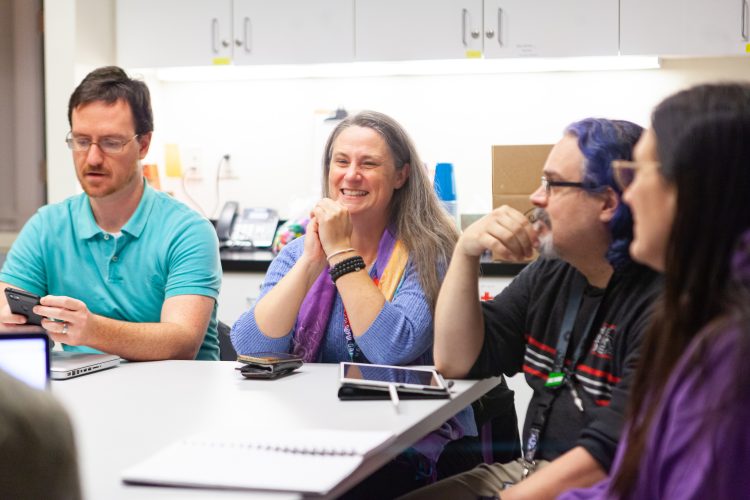
Teachers engage in group discussions about strategies for developing arts integration lesson plans. Photo: Travis Houze
Throughout the course, the educators learned and practiced techniques for integrating the arts into the curriculum to reach students with multiple learning styles. To dive deeper into a particular subject area, the educators engaged in several art techniques, including stop motion animation and contour line drawings.

Participants learn about the art of Los Carpinteros in the galleries. Photo: Travis Houze
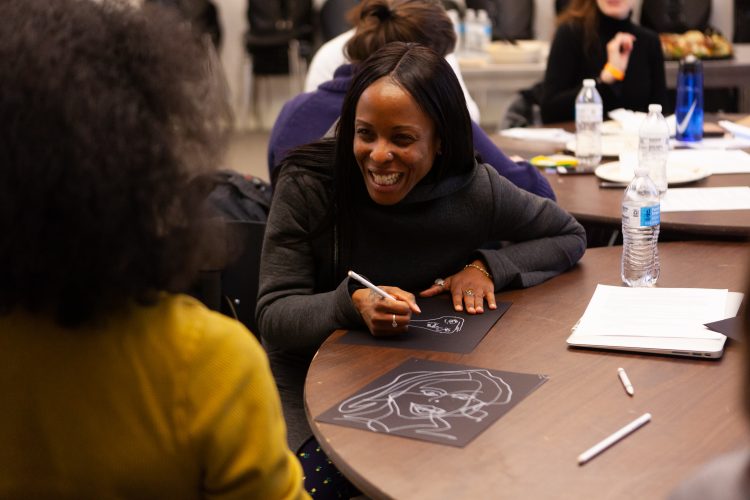
Participants execute contour line drawings based on the artwork of Los Carpinteros. Photo: Travis Houze
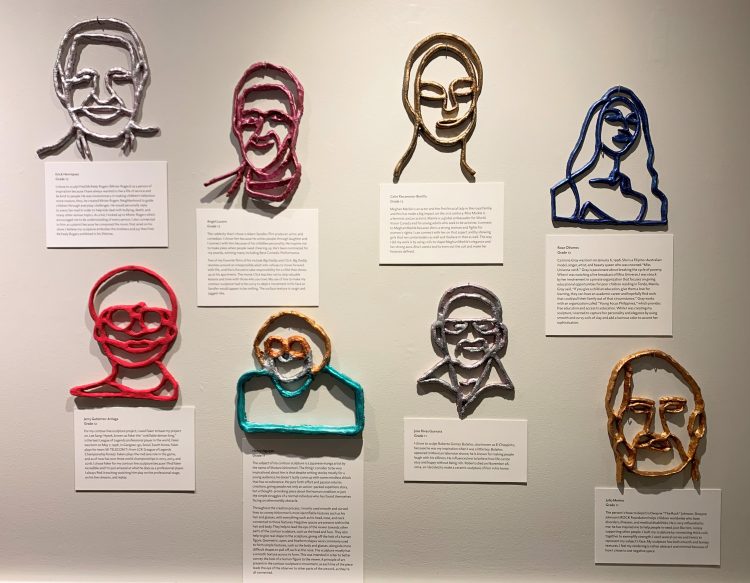
Art and Ceramics teacher Christina Kunze then taught her high school students how to make contour line sculptures of their own heroes and revolutionaries, teaching students how to empathize with their subjects and express their choices. Photo: Michael McSorley
As the culminating project for the course, the educators designed and facilitated arts-integrated lessons in their classrooms using the Prism.K12 strategies and artwork from The Phillips Collection. Many of them collaborated with other teachers at their schools to integrate multiple subject areas. Discover the results in the exhibition Energizing Education: Teaching through the PRISM of Arts Integration.

Teacher participants learn how to use stop-motion animation to link the visual arts with core curriculum subjects. Photo: Travis Houze
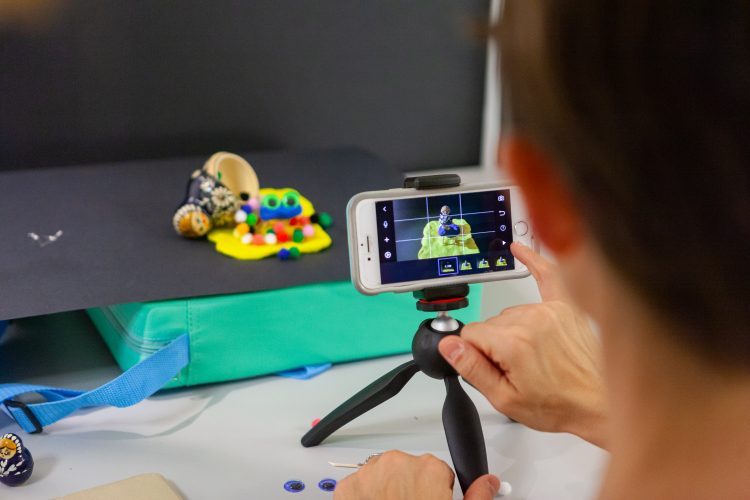
Teacher participants learn how to use stop-motion animation to link the visual arts with core curriculum subjects. Photo: Travis Houze

The participants then taught their students how to synthesize math equations using stop-motion animation by re-creating artworks by John Graham in the Phillips’s collection. Photo: Nicole Entwistle
Read about the course from a teacher’s perspective here.

